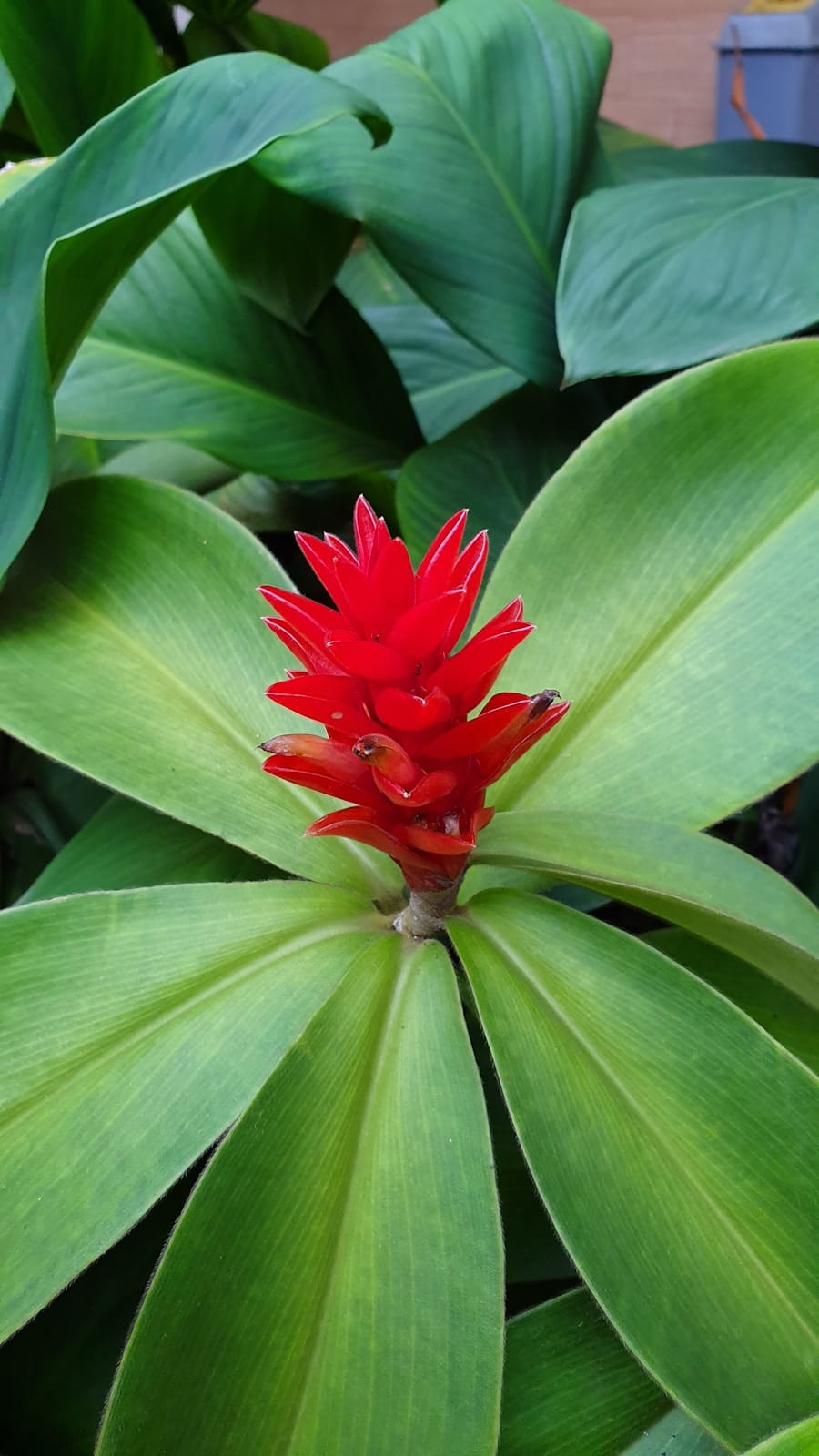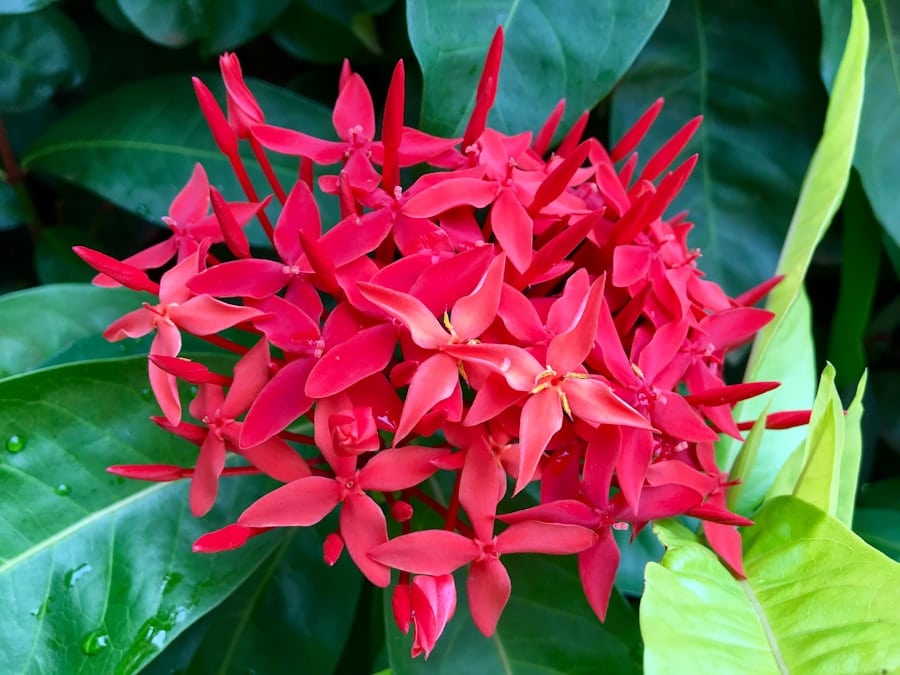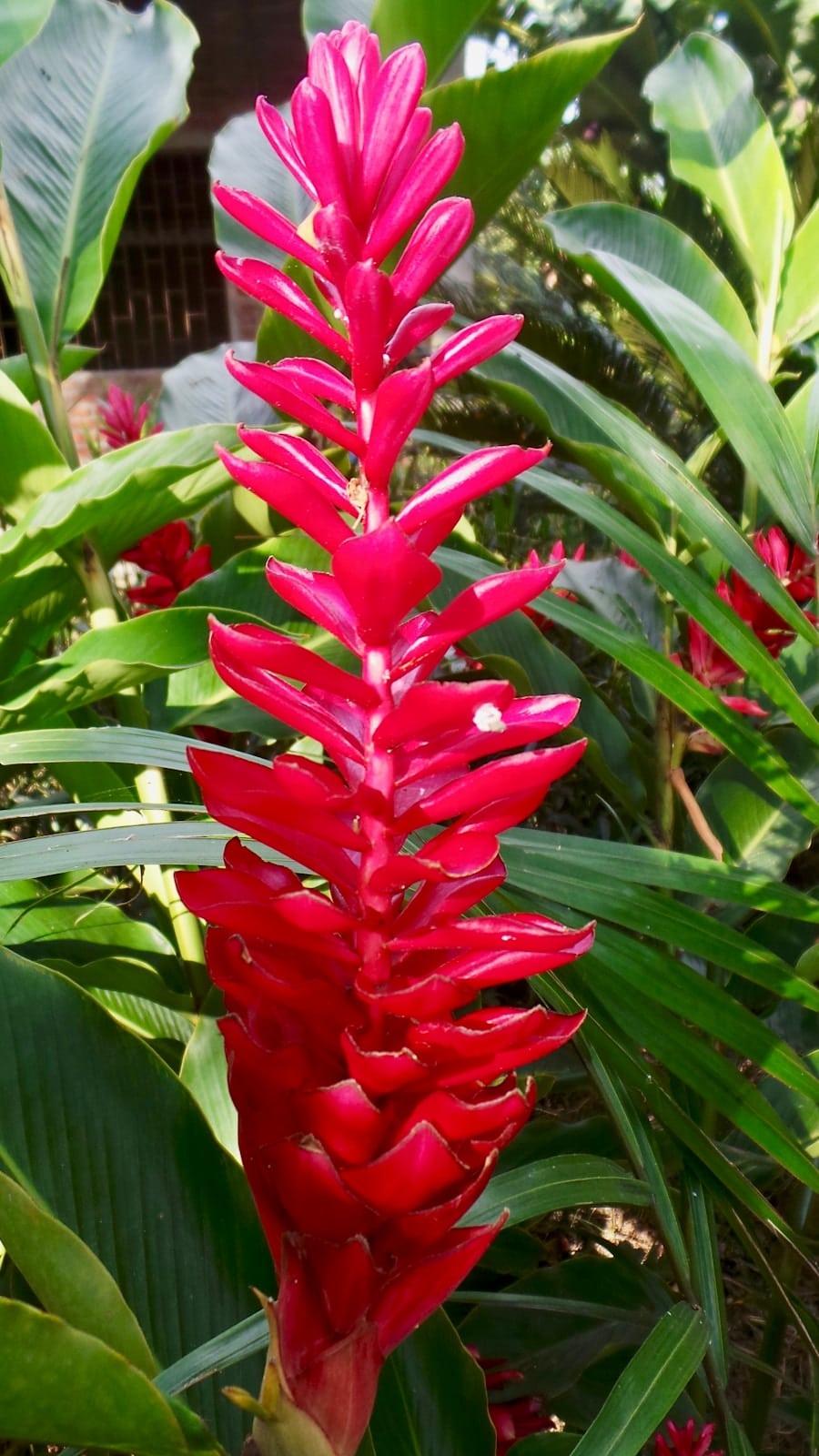As I delve into the vibrant world of tropical red flower plants, I find myself captivated by their striking beauty and the warmth they bring to any garden or landscape. These plants, often associated with exotic locales, evoke a sense of paradise and tranquility. Their vivid hues not only catch the eye but also serve as a reminder of the lush environments from which they originate.
Tropical red flowers are more than just ornamental; they embody a rich tapestry of culture, history, and biodiversity that can transform any space into a vibrant oasis. The allure of tropical red flower plants lies in their diversity. From the flamboyant hibiscus to the delicate anthurium, each variety offers unique characteristics and charm.
As I explore these plants, I am reminded of the importance of understanding their needs and preferences to cultivate them successfully. Whether I am an experienced gardener or a novice, the journey of nurturing these stunning plants can be both rewarding and fulfilling. In this article, I will share insights into popular varieties, care tips, design ideas, and the myriad benefits these plants can bring to my garden and well-being. Visit Our Site for more information about our products.
Key Takeaways
- Tropical red flower plants add vibrant color and exotic beauty to any garden or landscape.
- Popular varieties of tropical red flower plants include hibiscus, bromeliads, anthurium, and ginger lily.
- Growing and caring for tropical red flower plants requires well-draining soil, regular watering, and protection from harsh sunlight.
- Adding tropical red flower plants to your garden can attract pollinators and beneficial wildlife, enhancing the overall ecosystem.
- Incorporating tropical red flower plants in landscaping can create a lush, tropical paradise and add a touch of exotic flair to outdoor spaces.
Popular Varieties of Tropical Red Flower Plants
When it comes to tropical red flower plants, I am often drawn to a few standout varieties that consistently capture attention. One of my favorites is the hibiscus, known for its large, trumpet-shaped blooms that can be found in various shades of red. The hibiscus not only adds a bold splash of color but also thrives in warm climates, making it an ideal choice for my garden.
Its flowers are ephemeral, lasting only a day, yet they bloom continuously throughout the growing season, ensuring that my garden remains vibrant and lively. Another captivating variety is the red ginger plant, which features striking red bracts that resemble flowers. The unique structure of the red ginger adds an exotic touch to my landscape, and its lush green foliage provides a beautiful backdrop.
Additionally, I find the anthurium particularly enchanting with its glossy red spathes and heart-shaped leaves. This plant is not only visually appealing but also thrives indoors, making it a versatile choice for both indoor and outdoor settings. Each of these varieties brings its own charm and character, allowing me to create a diverse and colorful garden.
Growing and Caring for Tropical Red Flower Plants

Caring for tropical red flower plants requires a bit of knowledge and attention to detail. As I embark on this gardening journey, I have learned that these plants thrive in warm, humid environments. Therefore, it is essential to provide them with adequate sunlight—ideally six hours of direct sunlight each day.
I often find that placing them in a location where they receive morning sun and afternoon shade works wonders for their growth. Watering is another critical aspect of care. Tropical red flower plants prefer consistently moist soil but can be susceptible to root rot if overwatered.
I have found that checking the top inch of soil for dryness before watering helps me maintain the right balance. Additionally, fertilizing these plants during the growing season with a balanced fertilizer can promote healthy growth and vibrant blooms. Regular pruning also encourages bushier growth and removes any dead or damaged leaves, ensuring that my plants remain healthy and attractive.
Benefits of Adding Tropical Red Flower Plants to Your Garden
| Benefits | Description |
|---|---|
| Attract Pollinators | Tropical red flower plants attract bees, butterflies, and hummingbirds, which helps in pollination and promotes biodiversity in your garden. |
| Enhance Aesthetics | The vibrant red color of tropical flowers adds visual appeal to your garden, creating a beautiful and exotic atmosphere. |
| Low Maintenance | Many tropical red flower plants are low maintenance and can thrive in various climates, making them a great addition to any garden. |
| Medicinal Properties | Some tropical red flowers have medicinal properties and are used in traditional medicine for their healing properties. |
| Aromatherapy | Several tropical red flowers have a pleasant fragrance, which can enhance the sensory experience in your garden and promote relaxation. |
Incorporating tropical red flower plants into my garden offers numerous benefits beyond their aesthetic appeal. One significant advantage is their ability to create a sense of tranquility and relaxation. The vibrant colors and lush foliage evoke feelings of warmth and happiness, transforming my outdoor space into a serene retreat.
Whenever I step into my garden adorned with these stunning flowers, I feel an immediate sense of calm wash over me. Moreover, tropical red flower plants can enhance biodiversity in my garden. By attracting various pollinators such as bees and butterflies, these plants contribute to a healthier ecosystem.
I have noticed an increase in wildlife activity since adding these flowers to my landscape, which not only enriches my gardening experience but also supports local ecosystems. Additionally, many tropical plants are known for their air-purifying qualities, helping to improve indoor air quality when grown inside my home.
Design Ideas for Incorporating Tropical Red Flower Plants in Landscaping
As I consider how to incorporate tropical red flower plants into my landscaping, I am inspired by various design ideas that can elevate the overall aesthetic of my outdoor space. One approach I enjoy is creating focal points using larger varieties like hibiscus or red ginger. Placing these bold plants at strategic locations—such as near entryways or at the end of pathways—draws the eye and creates a stunning visual impact.
I also love the idea of mixing tropical red flowers with contrasting foliage plants to create depth and texture in my garden. For instance, pairing the glossy leaves of anthuriums with the feathery fronds of ferns can create a lush, layered effect that enhances the overall beauty of my landscape. Additionally, using tropical red flowers in container gardens allows me to experiment with different arrangements and placements throughout the seasons.
This flexibility enables me to refresh my garden’s look without committing to permanent changes.
Attracting Wildlife with Tropical Red Flower Plants

One of the most rewarding aspects of cultivating tropical red flower plants is their ability to attract wildlife to my garden. The vibrant colors and sweet nectar of these flowers serve as a magnet for pollinators such as bees, butterflies, and hummingbirds. I have found that planting clusters of these flowers not only enhances their visual appeal but also creates a welcoming environment for these beneficial creatures.
To further encourage wildlife visits, I often incorporate native plants alongside my tropical red flowers. This combination provides a diverse habitat that supports various species while ensuring that my garden remains ecologically balanced. Observing butterflies fluttering from flower to flower or hummingbirds hovering around my hibiscus brings me immense joy and reinforces the importance of creating spaces that nurture both flora and fauna.
Health and Wellness Benefits of Tropical Red Flower Plants
Beyond their visual allure, tropical red flower plants offer several health and wellness benefits that I have come to appreciate deeply. The presence of greenery and vibrant colors in my environment has been shown to reduce stress levels and promote relaxation. Spending time in my garden surrounded by these beautiful flowers allows me to unwind and reconnect with nature—a vital aspect of maintaining mental well-being.
Additionally, some tropical plants possess medicinal properties that can contribute to overall health. For instance, hibiscus tea made from dried hibiscus flowers is known for its antioxidant properties and potential benefits for heart health. By incorporating these plants into my life, I not only enhance my surroundings but also tap into their natural healing qualities.
The act of gardening itself has proven therapeutic effects; nurturing these plants fosters a sense of purpose and accomplishment that positively impacts my mental health.
Embracing the Beauty of Tropical Red Flower Plants
In conclusion, embracing tropical red flower plants has enriched my gardening experience in countless ways. Their stunning beauty, coupled with their ecological benefits and positive impact on well-being, makes them an invaluable addition to any landscape. As I continue to explore different varieties and care techniques, I am reminded of the joy these plants bring—not just in terms of aesthetics but also in fostering connections with nature.
By incorporating tropical red flowers into my garden design, I create a vibrant sanctuary that attracts wildlife while promoting relaxation and wellness. Whether I am enjoying a quiet moment among the blooms or marveling at the pollinators they attract, these plants serve as a constant reminder of nature’s beauty and resilience. As I embrace the allure of tropical red flower plants, I invite others to join me on this journey toward cultivating a lush paradise filled with color, life, and tranquility.
If you’re looking to enhance the beauty of your tropical red flower plant, you may want to consider creating your own DIY lawn fertilizer. This article from Chiku’s Garden provides helpful tips and instructions on how to make your own fertilizer to ensure your plants receive the nutrients they need to thrive. Check out the article here for more information on creating a healthy environment for your tropical red flower plant.
FAQs
What is a tropical red flower plant?
A tropical red flower plant is a type of plant that produces vibrant red flowers and is typically found in tropical regions with warm climates.
What are some common types of tropical red flower plants?
Some common types of tropical red flower plants include hibiscus, anthurium, bromeliad, and ginger lily.
How do you care for a tropical red flower plant?
Tropical red flower plants generally require well-draining soil, regular watering, and plenty of sunlight. They also benefit from occasional fertilization and protection from extreme temperatures.
Can tropical red flower plants be grown indoors?
Yes, many tropical red flower plants can be grown indoors as long as they receive adequate sunlight and are kept in a warm, humid environment.
What are some uses for tropical red flower plants?
Tropical red flower plants are often used for landscaping, as cut flowers in floral arrangements, and as decorative houseplants. Some varieties also have medicinal or culinary uses.

